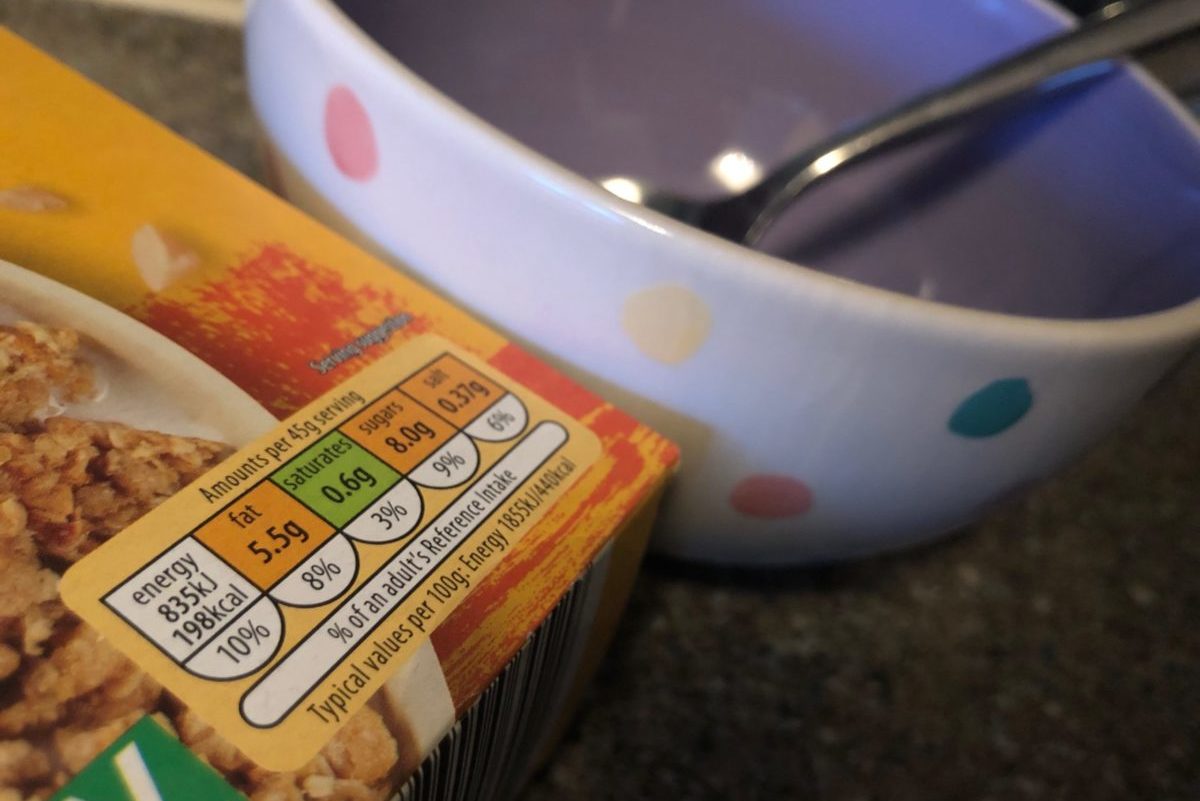Put your hand up if snacking has become your favourite hobby over the last year spent in lockdown? Well, if so, you’re not alone, with one third of UK adults admitting to have increased their snacking habits in between meals while we’ve been staying at home.
It is so important that you understand food labelling, which you find on pre-prepared and pre-packed food (not whole, one-ingredient foods). Food labelling uses a traffic light system to show how many calories, fats, sugar, salt and carbs there are per serving, using red if it contains a high quantity, yellow medium amount and green a low amount. This can be handy to know to help you make healthier informed decisions.
A lot of prepacked food will contain added preservatives to make taste better and increase shelf life. Not all preservatives are natural or are good for our health in higher quantities. One of these preservatives is salt (which may appear as sodium or sodium chlorine on food labelling) and we should be wary of pre-prepared foods that are high in salt. We’re recommended not to have more than 5g of salt a day, as too much salt in the diet increases the likelihood of strokes, hypertension and heart disease.
Food labelling also outlines how much fat is in food, but it’s important to remember eating fats in general will not make us fat, and they are not the devil! Fats are essential in our diet and are used for transporting vitamins, organ insulation and the protection of vital organs, to name just a few. It is true that fats are more dense in energy than carbohydrates and proteins, but we should aim to get 30% of our daily diet from fats. But the type of fats you want to avoid are trans fats, or partially hydrated fat or oils. These are created by adding hydrogen to vegetable oil and are the kind we would want to avoid. They’re added to foods to make them less likely to spoil, but from a nutritional standpoint they result in considerable potential harm with no apparent benefit. Take for example a doughnut. If you’ve ever left a doughnut out for a few days and it still tastes and feels fresh, it’s because it contains trans fats. As they can be used for longer and at a higher temperature, trans fats are a cheaper choice so are often found in fast food.
Don’t be fooled by ‘low-fat’ foods either. These are actually a marketing strategy as they often contain lots of added sugar. We think we are making the healthier choice by picking the lower fat option, but this sometimes means taking out the naturally-occurring fats (which are good for us in moderation) and replace them with a load of sugar. This is seen in certain types of yoghurt or peanut butter for example, so always check the label. If a product is genuinely low in fat, it will appear as green in the traffic light. Eating lots of refined sugar is not only bad for our health, but also for our waist line.
To understand why eating lots of sugar treats can make us fat (as well and over consuming) we first we need to understand the role of insulin. When we eat (mainly sugary and carbohydrate dense foods) insulin is produced by the pancreas to allow your liver, muscle and fat cells to store the glucose ingested as energy (Glycogen) so we can use it when we exercise, which is a great idea! However… This works well in theory, but when we constantly ingest sugar and carbohydrates at high amounts our cells become resistant to insulin and our liver and muscle are unable to use the ingested glucose as energy (or we consume too much and our body cant uptake all of the glucose at once), so we store it as fat. Fat cells do not become insulin resistant. Up to a point (by changing our eating habits) we can reverse this effect by making better food choices (by eating less refined sugar and picking lower glycaemic carbohydrate types foods).
The Glycaemic index (GI) is a ranking of carbohydrate containing foods based on their overall effect on blood glucose levels. High GI foods are digested and absorbed quicker, Sugary foods have a higher GI than non-sugary foods.Switching to eating mainly low GI carbs that slowly trickle glucose into your blood stream keeps your energy levels balanced and means you will feel fuller for longer between meals and are less likely to get those high sugar cravings. And remember, just because a product says no added sugar, doesn’t mean it doesn’t naturally contain sugar, like juices, so watch out for how much you’re drinking.
Lastly, always check the serving size. You might look at the traffic light system and think it looks okay for a quick meal but sometimes even though it looks like a portion size for one person, it often says serves two and so the traffic light system is actually only for half of the dish. This is an easy one to miss, so make sure you read the label carefully.

